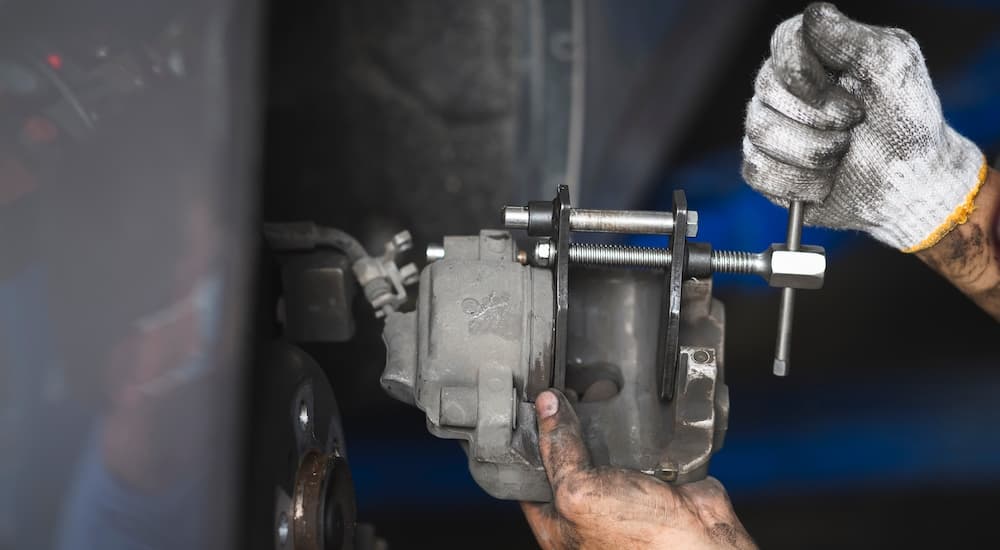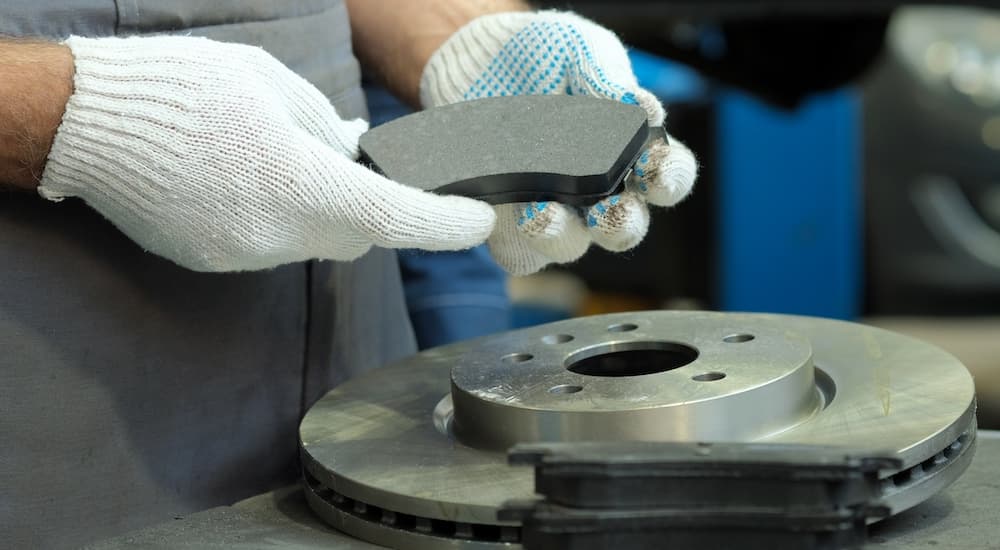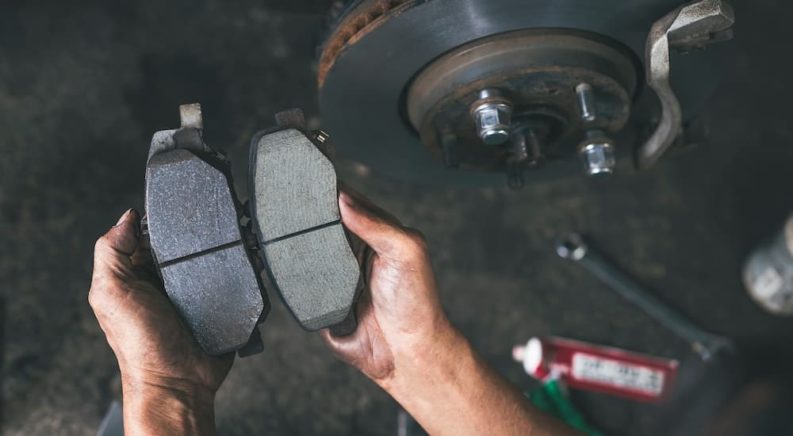Brake pads may be the most invisible component of your brake system. Hidden in the calipers, they are difficult to see, and you likely never think of them until they wear out. However, the brake pads are also one of the most critical components of your brake system, and they can be a cheap way to upgrade the performance of your car. Not only are the brake pads themselves rather inexpensive, but they are easy to swap out, and you have to replace them at regular intervals already. So the next time you need brake service, stop and consider what pads will maximize the performance of your car.
Brake Pad Materials
The performance of your brake pads will depend mainly on the materials that they are made from. Like tires, brake pads may look simple on the outside, but there is a huge amount of engineering that goes into designing pad compounds. While it may not look like it, the friction surface of a brake pad (the part that grips the rotors when the brake pedal is depressed) is a complex combination of materials carefully chosen to provide a specific blend of performance. Every pad will have slightly different performance depending on its exact composition, but in general, they can be broken down into three main categories.
Organic
The cheapest and oldest type of brake pads are organic pads. These are made from dozens of different materials, including rubber, glass, resins, and more. Because brake pads often used to be made from asbestos, these are sometimes referred to as “NAO” (Non-Asbestos Organic) pads. In general, you will want to steer clear of organic pads if you are looking for improved braking performance, but they do have some benefits. In addition to being cheap, they put little wear on your rotors, generate low brake dust, and are usually comfortable to drive with.
Metallic
Metallic pads use iron, steel, and copper to improve braking performance. Copper used to be a favored metal for brake pads, but it has been phased out in recent years because of environmental concerns. Metallic pads tend to be both the best and the most common type of pad, but they come in a wide range of varieties. Generally, metallic pads can be divided into semi-metallic (30-70% metal content) and low-metallic (under 30% metal content). Higher metal content usually means better performance, but increasing metal content also increases rotor wear, brake noise, and brake dust.
Ceramic
The most expensive type of brake pads are ceramic pads. These are a fairly recent invention and bring many benefits. Not only are they quiet and long-lasting, but they generate little brake dust and have better performance than organic pads. However, ceramic pads do not provide the same performance as metallic pads, so they are usually best suited for commuter vehicles rather than performance cars or large trucks. If you prize comfort and low maintenance over raw performance, upgrading to ceramic pads may be worth it.

Brake Pads and Temperatures
One of the most important aspects of brake pads is how they are affected by temperature. Upgrading braking systems is generally a matter of adding components that can withstand the incredibly high temperatures generated by sustained braking. Whether that means larger rotors to better dissipate heat or upgraded brake fluid with a higher boiling point, improving heat management is the name of the game. However, brake pads are more complicated because they behave differently depending on the temperature.
Good race brake pads can withstand temperatures of well over 1500 degrees Fahrenheit before they start to fade. Meanwhile, your average street pads will be straining long before temperatures hit four digits. But don’t be so quick to run out and buy the highest temperature-rated pads you can find. On the street, it is rare for brake temperatures to pass 400 degrees––the temperature at which those high-end pads are (literally) just getting warmed up.
Generally, the better a pad performs at high temperatures, the worse it performs at low temperatures. So while race pads are amazing when you’re diving into a corner at over 100 mph on the track, they actually won’t slow you down as quickly as the factory pads that came with your car when someone cuts you off on your morning commute. In order to maximize the performance of your car, you need to match the brake pad temperature range to the driving conditions you expect.
Friction and Feel
If the factory pads are already well-suited to the average driving conditions, and you aren’t going to be taking your car to the track, what should you look for when upgrading your brake pads? The main improvements come in friction and feel. While the factory pads are always a safe choice, they have to be designed to work for the widest possible range of drivers. That means that they have to be reasonably quiet, comfortable to drive with, and most importantly, affordable. If you are willing to make some trade-offs of aspects that don’t matter as much to you, you can find improvements in places that count.
Friction dictates how much force the brake pads can apply to the rotors and is the most important aspect in how quickly a car can come to a stop. With some shopping around, it usually isn’t hard to find aftermarket brake pads that generate more friction than the factory pads that came with your car. Higher friction pads will often come at the cost of being louder, generating more brake dust, and being more expensive, which is why they are not used by the factory. If that’s something you can live with, higher friction pads are an easy upgrade.
The brake feel is more subjective, but changing the brake pads can noticeably change how your brake pedal feels. Some of the most noticeable aspects of brake feel that can be affected are the initial “bite” when the brakes are engaged and the “release” when you let off the brakes. Switching to higher-performance pads can often create a sharper bite and release. Whether that is good or bad will depend on your preferences, but it is something to be aware of. High-performance pads may also have less compression, which can make it easier to precisely modulate braking, although this will usually be less noticeable.

Brake Pads, the Unknown Heroes
Upgrading the brake pads in your car may not be the flashiest modification that you can make, but it can bring real performance improvements. Before choosing some basic pads for your next brake service, look through your available options, and you may be surprised to see how much of an upgrade you can have for a rather low cost. Even full track-ready brake pads will only cost a bit more than your standard factory pads, and since you have to replace pads regularly, this is an upgrade that there is no reason to skip. Whether you simply want a more confident brake feel for your daily driver or have thoughts of taking your car out to the local autocross event, changing the brake pads in your car is a simple performance modification that will pay off quickly.

